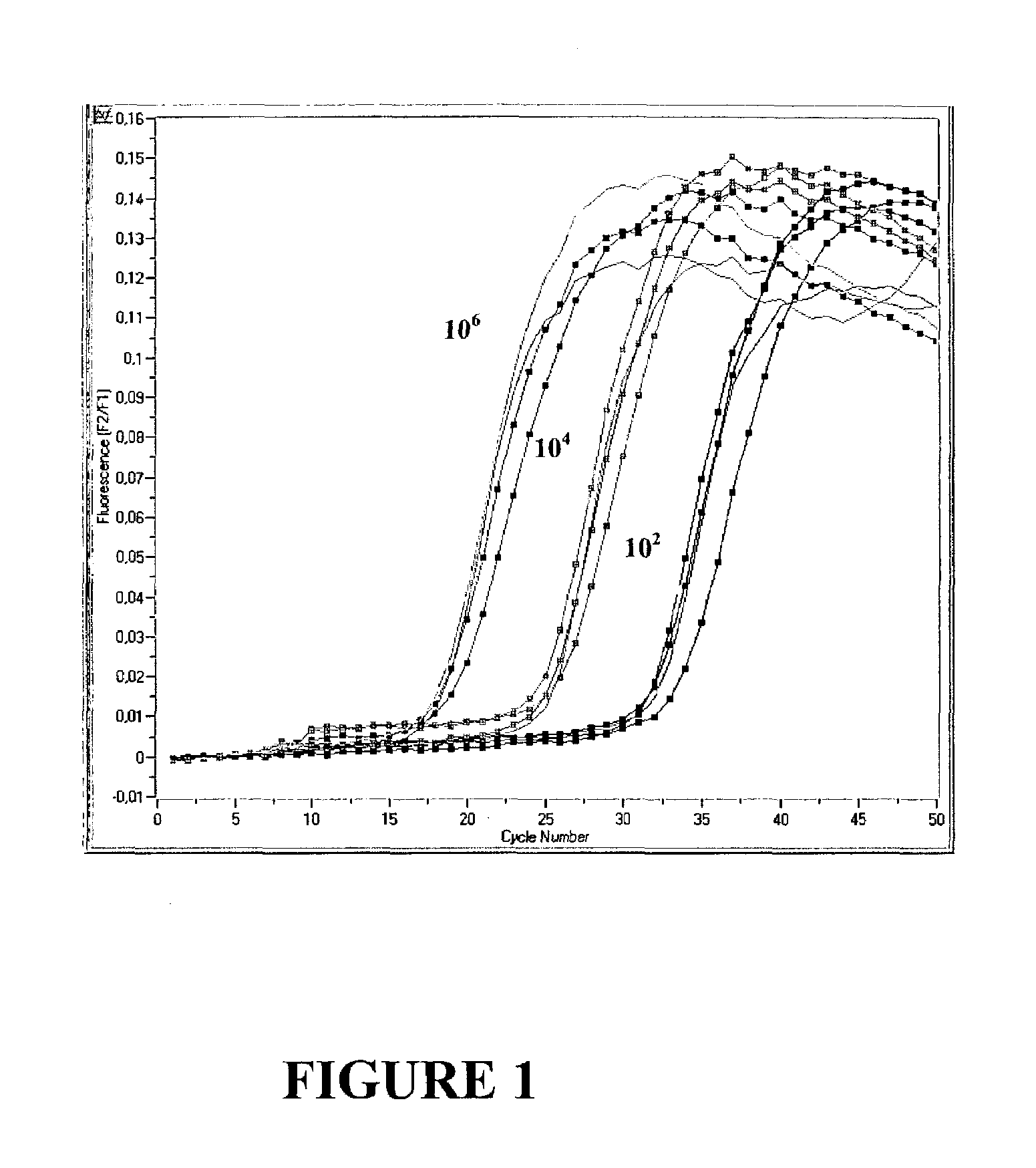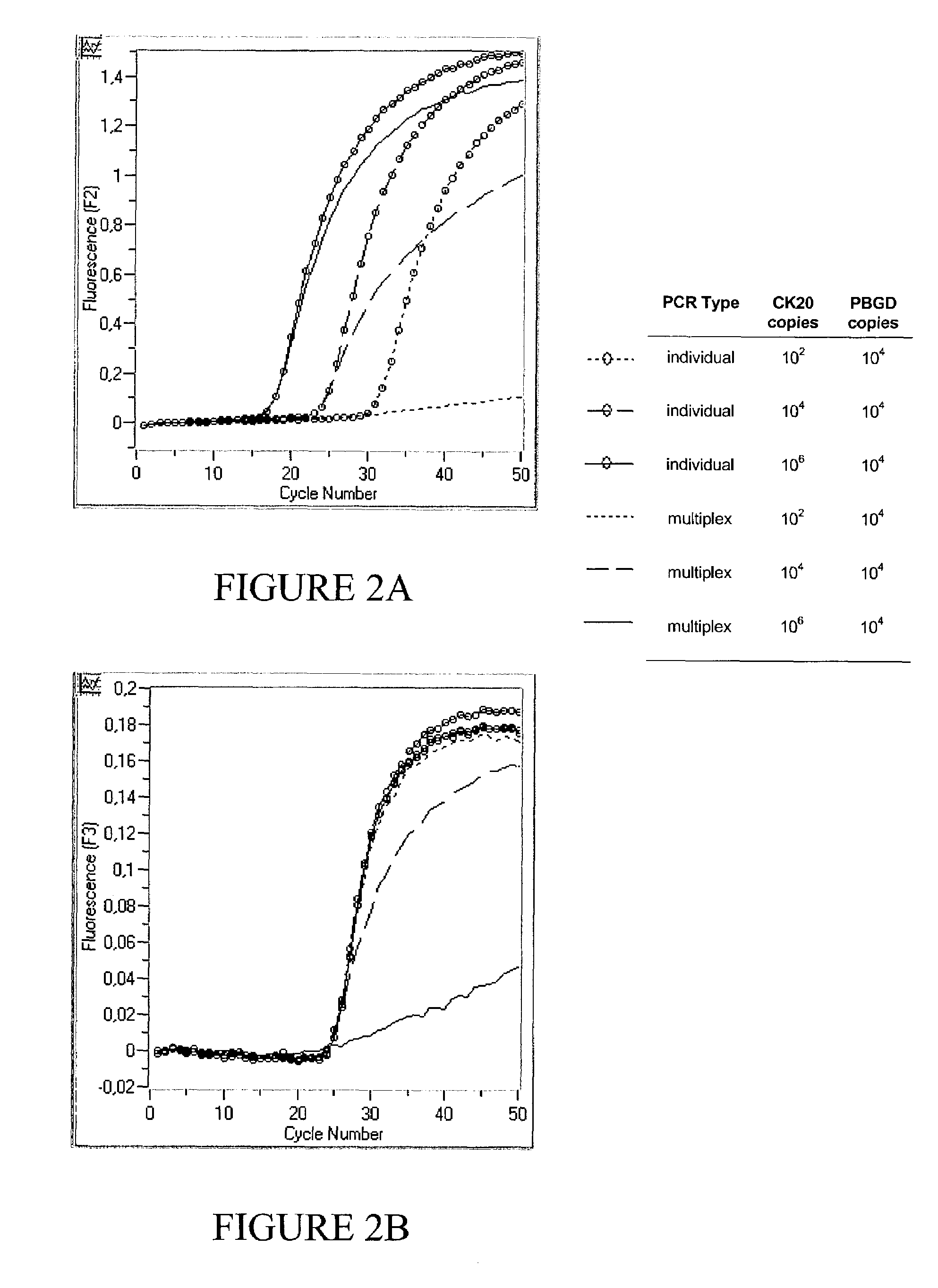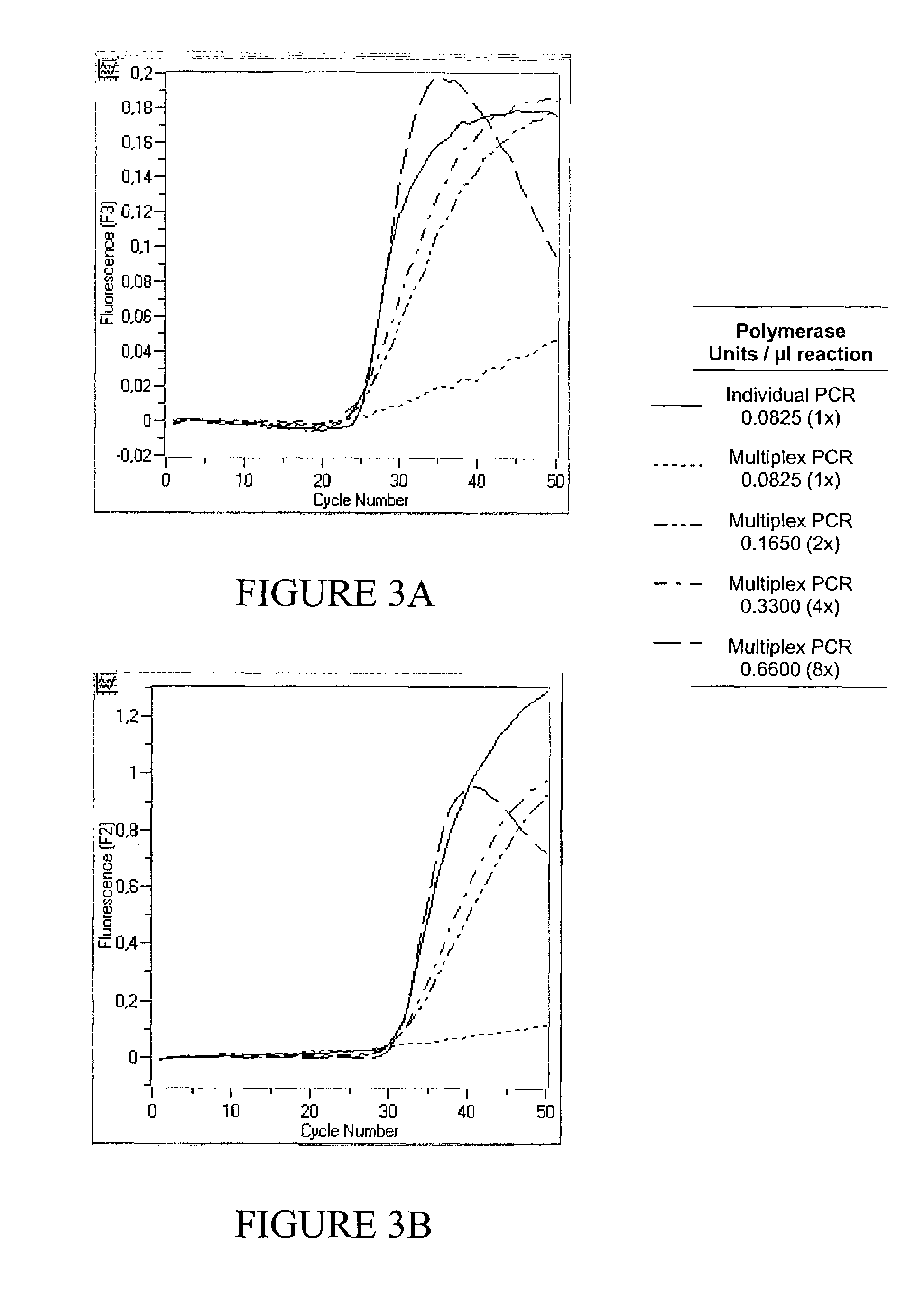Quantitative multiplex PCR with high dynamic range
a multiplex pcr and dynamic range technology, applied in the field of real-time pcr, can solve the problem of inability to achieve absolute quantification, and achieve the effect of reducing the annealing temperature of such multiplex reactions and increasing the amoun
- Summary
- Abstract
- Description
- Claims
- Application Information
AI Technical Summary
Benefits of technology
Problems solved by technology
Method used
Image
Examples
example 1
[0082]Real Time PCR of CK20 and PBGD Plasmid DNA
[0083]To demonstrate the validity of the invention, cytokeratin 20 (CK20), a gene studied for the detection of disseminated tumor cells and porphorynbilinogen deaminase (PBGD), commonly used as a housekeeping gene were chosen as amplification targets.
[0084]Partial fragments of the Cytokeratin 20 (CK20) and porphoryinbilinogen deaminase (PBGD) genes were cloned into separate pT3T7 plasmid vectors (Roche Molecular Biochemicals). Copy numbers of linearized plasmid DNA were estimated spectrophotometry with the assumption that 1 mole is equivalent to 6×1023 copies. CK20 and PBGD Plasmid DNA mixtures were prepared by dilutions using a diluent consisting of MS2 RNA (10 ng / μl) in 10 mM Tris-HCl, pH 8.5.
[0085]Kinetic PCR was conducted on a LightCycler instrument (Roche Molecular Biochemicals). A typical PCR assay consisted of 1 μl DNA, 1×Detection Mix, 1×Reaction buffer, 4 mM magnesium chloride and varying amounts of Taq Polymerase (all from Ro...
example 2
[0091]Excessive Polymerase does not Increase Performance of a Monoplex PCR Assay
[0092]Real time PCR of 102, 104 and 106 copies CK 20 was performed in a monoplex set up according to example 1 with increasing amounts of either 0.0825 U / μl , 0.165 U / μl, 0.33 U / μl or 0.66 Uμl Fast Start Polymerase (Roche Molecular Biochemicals). Results are shown in FIG. 1. As can be seen, an increase in enzyme concentration does not result in a lower Cp value, since the fluorescent signal curves for each copy number identified were basically identical regardless of the enzyme concentration used (left: 106 copies, middle: 104 copies, right: 102 copies). It has to be concluded that for a monoplex PCR, i.e. amplification of only one target nucleic acid, the amplification reaction is not enhanced by an excess of Polymerase, even if target nucleic acid is initially present in high copy numbers.
example 3
[0093]Targets of relatively low abundance are not quantitatively amplified within a multiplex PCR approach
[0094]FIG. 2 shows typical results of monoplex PCRs of CK20 and PBDG respectively according to example 1 as compared to a multiplex approach by simply combining the primer sets and fluorescent probe sets for kinetic PCR) of two individual PCRs into a single PCR (multiplex PCR) according to example 1 using 0.0825 U / μl Taq Polymerase.
[0095]The different template nucleic acids for the reactions include three plasmid mixtures containing CK20 / PBGD copy amounts of 102 / 104, 104 / 104 and 106 / 104 respectively. In the same PCR run, the reaction efficiency of amplifying CK20 in an individual PCR with no competing reaction (FIG. 2a), and in a multiplex PCR with a background PBGD PCR occurring in the same reaction vessel, is monitored in channel 2 (FIG. 2a). Simultaneously, the reaction efficiency for amplifying PBGD in an individual and multiplex PCR is monitored in channel 3 (FIG. 2b).
[0096...
PUM
| Property | Measurement | Unit |
|---|---|---|
| volume | aaaaa | aaaaa |
| pH | aaaaa | aaaaa |
| concentration | aaaaa | aaaaa |
Abstract
Description
Claims
Application Information
 Login to View More
Login to View More - R&D
- Intellectual Property
- Life Sciences
- Materials
- Tech Scout
- Unparalleled Data Quality
- Higher Quality Content
- 60% Fewer Hallucinations
Browse by: Latest US Patents, China's latest patents, Technical Efficacy Thesaurus, Application Domain, Technology Topic, Popular Technical Reports.
© 2025 PatSnap. All rights reserved.Legal|Privacy policy|Modern Slavery Act Transparency Statement|Sitemap|About US| Contact US: help@patsnap.com



